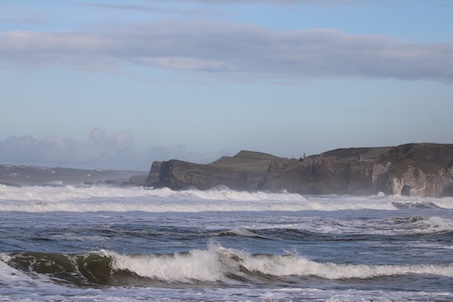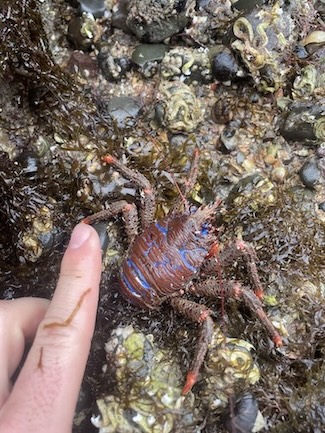Storm Watch
Storms can be spectacular forces of nature which are becoming more intense and frequent due to Climate Change. Though destructive, storms can provide unique opportunities for biological recording. After the passing of a powerful storm, you might find a number of species you would not otherwise see on the shore. Storm Watch aims to capture records of sublittoral species that have been stranded on our shorelines after strong storm events.

Storm photo: D. Wilson CC BY
What to look out for
Tunicates, sea stars, skate eggs, scallops, seaweeds and other marine species are frequently stranded on the shoreline after strong winds and rough seas. Wearing protective gloves and weather appropriate gear, take a look through some of the flotsam and jetsam to see what species washed up.

Galathea strigosa Spiny Squat Lobster © Matty Munn
Caution
Storms are dangerous, especially on the coast! It is important to wait for weather warnings to pass, conditions to before venturing out onto the shore. If you find a seal, dolphin, whale, shark or sea turtle stranded after a storm do not approach them and keep any pets with you under control. Call DAERA Marine and Fisheries Division: 028 70823600, or for a live or injured seal call Exploris 07701372623 or 028 4272 8062.
DAERA Stranding Protocols
Important: if you use this site regularly, please remember to login.
This will give you access to the My Records report which allows you to manage your data.